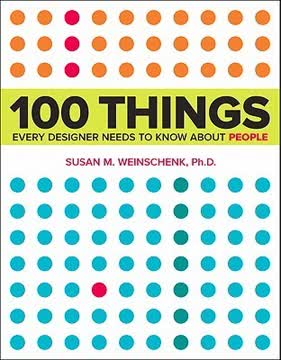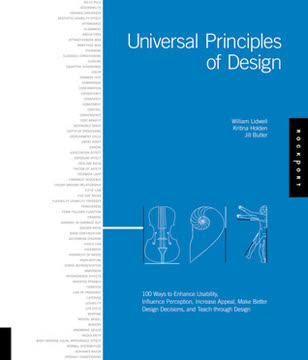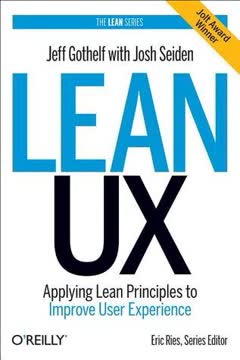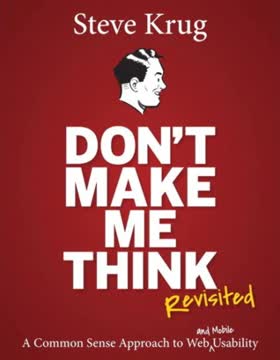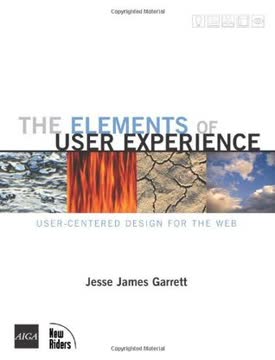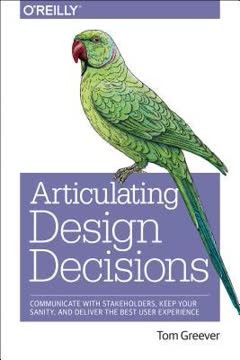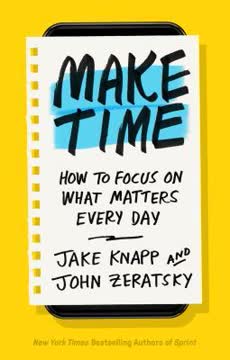النقاط الرئيسية
1. تحديد هدف طويل الأمد واضح وتحديد أسئلة السبرينت
"لماذا نقوم بهذا المشروع؟ أين نريد أن نكون بعد ستة أشهر، أو سنة، أو حتى خمس سنوات من الآن؟"
حدد أهدافًا طموحة. ابدأ سبرينتك بتحديد هدف طويل الأمد واضح يعكس مبادئ فريقك وطموحاته. سيكون هذا الهدف بمثابة منارة للحفاظ على تحرك الجميع في نفس الاتجاه طوال فترة السبرينت. لا تقلق بشأن تجاوز الحدود؛ ستساعدك عملية السبرينت في العثور على نقطة انطلاق جيدة وتحقيق تقدم حقيقي نحو حتى أكبر الأهداف.
حدد الأسئلة الرئيسية. بعد تحديد الهدف، قم بإعداد قائمة بأسئلة السبرينت التي تمثل المجهولات والمخاطر المحتملة التي تقف بين فريقك والهدف الطويل الأمد. ستوجه هذه الأسئلة حلولك وقراراتك طوال فترة السبرينت، مما يوفر لك قائمة مرجعية شبه كاملة يمكنك الرجوع إليها وتقييمها بعد اختبار يوم الجمعة. أمثلة على أسئلة السبرينت:
- هل يمكننا شرح منتجنا للأشخاص الذين لم يجربوه من قبل؟
- هل سيثق العملاء في خبرتنا؟
- هل يمكننا مساعدة فرد على فهم منتجنا قبل انضمام فريقه؟
2. رسم التحدي واختيار هدف
"مثل جين كرانز ورسمه لعودة الأرض، ستقوم أنت وفريقك بوضع الأساسيات: هدفك الطويل الأمد والأسئلة الصعبة التي يجب الإجابة عليها."
أنشئ خريطة بصرية. ارسم مخططًا بسيطًا يمثل رحلة العميل عبر منتجك أو خدمتك. يجب أن تتضمن هذه الخريطة:
- الفاعلون الرئيسيون (العملاء، الموظفون، إلخ) على اليسار
- النهاية (الهدف المحقق) على اليمين
- 5-15 خطوة في المنتصف توضح كيفية تفاعل العملاء مع منتجك
اختر هدفًا. بعد إنشاء الخريطة، يجب على المتخذ القرار (عادةً الرئيس التنفيذي أو قائد المشروع) اختيار عميل مستهدف واحد وحدث مستهدف واحد على الخريطة. ستصبح هذه القرار محور التركيز لبقية السبرينت - حيث تتدفق الرسومات والنموذج الأولي والاختبار من هذا الاختيار.
3. رسم حلول متنافسة بشكل فردي
"العصف الذهني الجماعي مكسور، لكن هناك طريقة أفضل."
اعمل بمفردك معًا. بدلاً من العصف الذهني الجماعي التقليدي، اجعل أعضاء الفريق يعملون بشكل مستقل لتطوير الحلول. تتيح هذه الطريقة التفكير العميق وتوليد أفكار متنوعة دون التفكير الجماعي. تتضمن عملية الرسم ذات الأربع خطوات:
- الملاحظات (20 دقيقة): مراجعة المعلومات الموجودة وتدوين الملاحظات.
- الأفكار (20 دقيقة): كتابة أفكار أولية وتحديد الأكثر وعدًا.
- Crazy 8s (8 دقائق): رسم بسرعة ثمانية تنويعات من أفضل فكرة لديك.
- رسم الحل (30-90 دقيقة): إنشاء قصة مصورة من ثلاثة لوحات لأقوى حل لديك.
احتضان عدم الكمال. تذكر أن المهارة الفنية ليست مهمة؛ يمكن لأي شخص رسم حل رائع باستخدام أشكال بسيطة، ورموز بشرية، وكلمات. يجب أن يكون التركيز على توصيل الأفكار بوضوح وحل المشكلات بشكل إبداعي.
4. اتخاذ قرارات ذكية دون نقاش مطول
"يوفر السبرينت لشركاتنا الناشئة قوة خارقة: يمكنهم التقدم إلى المستقبل لرؤية منتجهم النهائي وردود فعل العملاء، قبل اتخاذ أي التزامات مكلفة."
استخدم اتخاذ القرار المنظم. لتجنب النقاشات التي لا تنتهي واتخاذ قرارات فعالة، اتبع عملية "القرار اللاصق" ذات الخطوات الخمس:
- متحف الفن: عرض رسومات الحلول على الحائط.
- خريطة الحرارة: مراجعة صامتة وتحديد الأجزاء المثيرة للاهتمام باستخدام ملصقات نقطية.
- نقد سريع: مناقشة سريعة لأبرز النقاط في كل حل.
- استفتاء غير رسمي: يصوت كل شخص لحلهم المفضل.
- التصويت النهائي: يتخذ المتخذ القرار الاختيار النهائي.
ثق في المتخذ القرار. بينما تعتبر مدخلات الفريق قيمة، يجب أن تكون السلطة النهائية في اتخاذ القرار مع المتخذ القرار. يضمن ذلك توجيهًا واضحًا ويمنع شلل القرار. إذا كانت هناك أفكار قوية ومتعارضة متعددة، فكر في إنشاء نماذج أولية لها في "مواجهة" لاختبارها وجهًا لوجه مع العملاء.
5. إنشاء نموذج أولي واقعي في يوم واحد فقط
"تظاهر بذلك."
اعتمد عقلية النموذج الأولي. لبناء نموذج أولي واقعي في يوم واحد فقط، احتضن هذه المبادئ:
- يمكنك إنشاء نموذج أولي لأي شيء
- النماذج الأولية قابلة للتخلص
- ابني فقط ما يكفي للتعلم، ولكن ليس أكثر
- يجب أن يبدو النموذج الأولي حقيقيًا
ركز على الواجهة. أنشئ نموذجًا أوليًا بجودة "غولديلوكس" يكون واقعيًا بما يكفي لاستحضار ردود فعل صادقة من العملاء، ولكن ليس مصقولًا لدرجة أنه يستغرق وقتًا طويلاً للبناء. استخدم أدوات تسمح بالنمذجة السريعة، مثل Keynote أو PowerPoint للمنتجات الرقمية، أو تعديل الأشياء الموجودة للمنتجات المادية.
قسم واحتل. وزع الأدوار على أعضاء الفريق:
- صانعون: إنشاء مكونات فردية
- خياط: دمج المكونات بسلاسة
- كاتب: صياغة نص ومحتوى واقعي
- جامع المواد: جمع المواد اللازمة
- محاور: التحضير لمقابلات العملاء
6. اختبار مع العملاء المستهدفين للحصول على رؤى قيمة
"خمسة هو الرقم السحري."
قم بإجراء خمسة مقابلات. يعد اختبار خمسة عملاء مستهدفين مختارين بعناية كافيًا لتحديد الأنماط والرؤى الأكثر أهمية. توازن هذه الطريقة بين الكفاءة والتعلم القيم. هيكل كل مقابلة باستخدام تنسيق المقابلة ذات الخمس مراحل:
- ترحيب ودي
- أسئلة سياقية
- تقديم النموذج الأولي
- المهام والتوجيهات
- ملخص سريع
راقب معًا. اجعل فريق السبرينت بالكامل يشاهد المقابلات معًا، مع تدوين الملاحظات على ملصقات لاصقة. تتيح هذه الملاحظة التعاونية التعرف الفوري على الأنماط وتمنع سوء تفسير النتائج. استخدم شبكة بسيطة لتنظيم الملاحظات، مع أعمدة لكل عميل وصفوف لمختلف جوانب النموذج الأولي.
7. تعلم وخطط للخطوات التالية بناءً على ملاحظات العملاء
"فائز في كل مرة."
حدد الأنماط. بعد المقابلات، راجع الملاحظات المجمعة كفريق. ابحث عن الأنماط التي تظهر عبر عدة عملاء، مع إيلاء اهتمام خاص للتفاعلات القوية (إيجابية أو سلبية). صنف هذه الأنماط والرؤى كما تتعلق بأسئلة السبرينت وهدفك الطويل الأمد.
حدد الخطوات التالية. بناءً على الأنماط والرؤى التي تم جمعها، قرر مسار العمل التالي. تشمل النتائج المحتملة:
- فشل فعال: اكتشاف أن حلاً ما لا يعمل، مما يوفر الوقت والموارد
- نجاح معيب: تحديد اتجاه واعد يحتاج إلى تحسين
- فائز واضح: تأكيد حل ناجح جاهز للتنفيذ
تذكر أن كل نتيجة سبرينت توفر تعلمًا قيمًا، سواء كان ذلك في التحقق من الأفكار، أو كشف المشكلات الخفية، أو الكشف عن فرص جديدة. استخدم هذه المعلومات لتوجيه جهودك المستقبلية وتحسين منتجك أو خدمتك.
آخر تحديث::
FAQ
What's "Sprint: How to Solve Big Problems and Test New Ideas in Just Five Days" about?
- Overview: "Sprint" by Jake Knapp, John Zeratsky, and Braden Kowitz is a guide to solving big problems and testing new ideas in just five days. It outlines a structured process developed at Google Ventures.
- Purpose: The book aims to help teams quickly move from idea to prototype, allowing them to test and learn from real-world feedback without extensive time or resource investment.
- Structure: The sprint process is broken down into five days, each with specific tasks and goals, from understanding the problem to testing a prototype with real users.
- Audience: It's designed for teams in startups, large companies, and even educational settings who need a fast, efficient way to innovate and make decisions.
Why should I read "Sprint"?
- Efficiency: The book offers a proven method to accelerate decision-making and innovation, which is valuable for anyone facing tight deadlines or resource constraints.
- Practicality: It provides a step-by-step guide that can be applied to a wide range of challenges, making it a versatile tool for problem-solving.
- Real-world Examples: The authors share numerous case studies from their experiences at Google Ventures, illustrating the effectiveness of the sprint process.
- Team Collaboration: It emphasizes the importance of diverse team input and structured collaboration, which can improve team dynamics and outcomes.
What are the key takeaways of "Sprint"?
- Structured Process: The sprint is a five-day process that includes understanding the problem, sketching solutions, deciding on the best ideas, prototyping, and testing with users.
- Focus on Prototyping: The book stresses the importance of creating a realistic prototype quickly to gather user feedback and make informed decisions.
- Team Dynamics: It highlights the value of having a diverse team and a clear decision-maker to guide the process and ensure progress.
- Learning from Users: Testing with real users is crucial to validate ideas and uncover insights that can guide future development.
How does the sprint process work in "Sprint"?
- Day 1 - Understand: The team sets a long-term goal, maps the problem, and gathers insights from experts to identify key questions.
- Day 2 - Sketch: Team members work individually to sketch solutions, drawing on existing ideas and inspiration.
- Day 3 - Decide: The team reviews sketches, votes on the best ideas, and creates a storyboard for the prototype.
- Day 4 - Prototype: A realistic prototype is built quickly, focusing on creating a façade that appears real to users.
- Day 5 - Test: The prototype is tested with real users, and the team observes and learns from their reactions to inform next steps.
What is the "prototype mindset" in "Sprint"?
- Disposable Prototypes: Prototypes should be built quickly and be disposable, focusing on learning rather than perfection.
- Realistic Appearance: The prototype must appear real to users to elicit genuine reactions and feedback.
- Focus on Learning: The goal is to learn as much as possible from user interactions, not to create a finished product.
- Optimism and Resourcefulness: Teams should believe they can prototype anything and be resourceful in finding ways to simulate the final product.
How do you decide on the best ideas in "Sprint"?
- Heat Map Voting: Team members silently review sketches and use dot stickers to vote on the most promising parts of each idea.
- Speed Critique: The team discusses the highlights of each sketch, focusing on areas with the most votes.
- Straw Poll: Each team member votes for their favorite idea, providing input for the final decision.
- Supervote: The Decider makes the final call, using their judgment and the team's input to choose the ideas to prototype.
What role do team dynamics play in "Sprint"?
- Diverse Team: A mix of skills and perspectives is crucial for generating a wide range of ideas and solutions.
- Decider's Role: The Decider is responsible for making final decisions, ensuring the team stays focused and aligned.
- Facilitator's Role: The Facilitator manages the process, keeps the team on track, and ensures productive discussions.
- Collaboration and Independence: While collaboration is key, the process also emphasizes individual work to avoid groupthink and encourage diverse solutions.
How do you test prototypes with users in "Sprint"?
- Five-Act Interview: The interview is structured into five acts: a friendly welcome, context questions, prototype introduction, tasks and nudges, and a quick debrief.
- Think Aloud: Users are encouraged to think aloud as they interact with the prototype, providing insights into their thoughts and reactions.
- Observe Patterns: The team watches the interviews together, taking notes and looking for patterns in user feedback.
- Iterate Based on Feedback: The insights gathered from user testing inform the next steps, whether it's refining the prototype or pivoting to a new idea.
What are some real-world examples from "Sprint"?
- Slack: The book details how Slack used the sprint process to refine their product explanation for non-tech customers, leading to significant improvements.
- Blue Bottle Coffee: The team used a sprint to develop an online store that effectively conveyed their brand's quality and expertise.
- Savioke: The sprint helped Savioke develop a friendly robot personality that enhanced guest experiences in hotels.
- FitStar: The process was used to clarify the value proposition of a fitness app, leading to better user understanding and engagement.
What are the best quotes from "Sprint" and what do they mean?
- "Start at the end." This quote emphasizes the importance of defining a clear long-term goal and working backward to identify the steps needed to achieve it.
- "You can prototype anything." It highlights the book's core belief that with the right mindset and tools, any idea can be quickly turned into a testable prototype.
- "Work alone together." This phrase captures the balance between individual creativity and team collaboration, which is central to the sprint process.
- "The prototype must appear real." It underscores the necessity of creating a realistic façade to gather genuine user feedback.
How can "Sprint" be applied in different contexts?
- Startups: The sprint process is ideal for startups needing to quickly validate ideas and make informed decisions with limited resources.
- Large Companies: It can help large organizations innovate and solve complex problems by fostering a focused, collaborative environment.
- Education: Educators can use sprints to teach problem-solving and design thinking, as demonstrated by examples from universities and high schools.
- Nonprofits and Government: The process can be adapted to address challenges in these sectors, helping teams develop and test solutions efficiently.
What are some common challenges when implementing "Sprint"?
- Time Commitment: Clearing five full days for a sprint can be challenging, especially in larger organizations with busy schedules.
- Decider's Involvement: Ensuring the Decider is present and engaged throughout the sprint is crucial for making effective decisions.
- Prototyping Skills: Teams may need to learn new tools and techniques to create realistic prototypes quickly.
- User Recruitment: Finding and scheduling the right users for testing can be time-consuming but is essential for meaningful feedback.
مراجعات
تلقى كتاب Sprint تقييمات إيجابية في الغالب بسبب نهجه العملي في النمذجة السريعة وحل المشكلات. يثني القراء على التعليمات الواضحة والمفصلة خطوة بخطوة، بالإضافة إلى الأمثلة الواقعية. يجد الكثيرون أن تقنيات الكتاب مفيدة لمختلف الصناعات وأحجام الفرق. بينما ينتقد البعض نقص الأصالة، مشيرين إلى أوجه التشابه مع منهجيات موجودة. يشعر آخرون أن المحتوى كان يمكن أن يكون أكثر اختصارًا. بشكل عام، يقدّر المراجعون الأفكار القابلة للتنفيذ في الكتاب وإمكاناته في تسريع الابتكار، على الرغم من أن البعض يتساءل عن مدى قابليته للتطبيق بشكل أوسع أو عمق التحليل.
Similar Books

